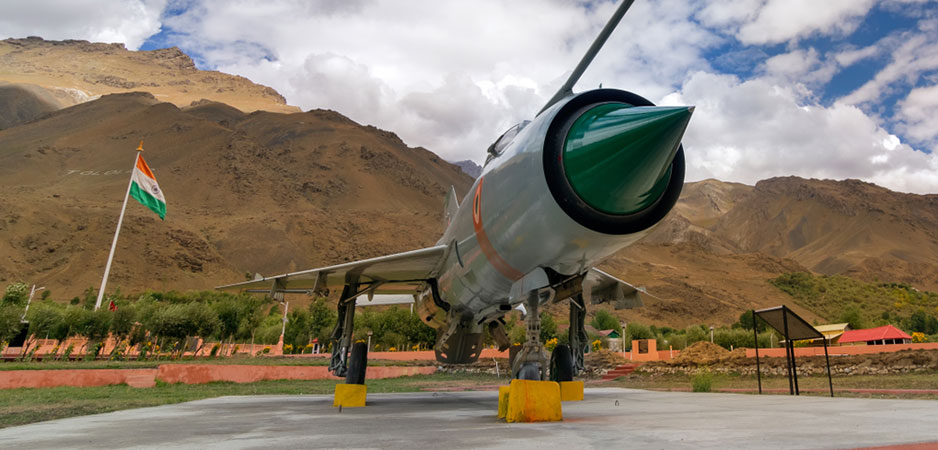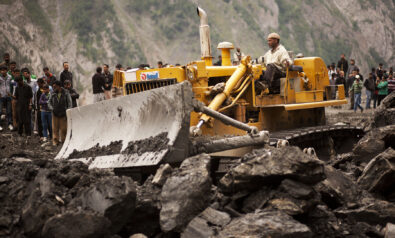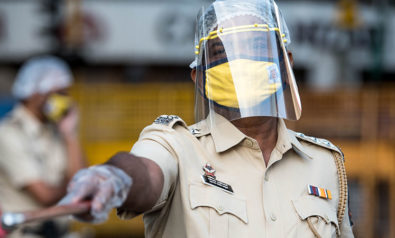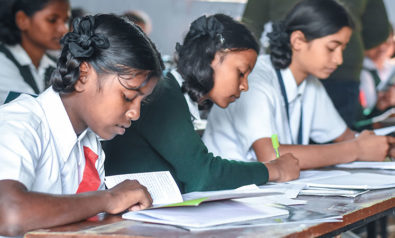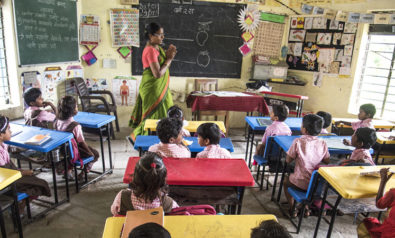In a complex world, countries have to clearly identify and evaluate external threats on a continuous basis. These are no longer only military, insurgent and terror, but also scientific, technological and economic.
360° Context: The State of the Indian Republic
In the Indian situation, foreign powers have engaged in cyberattacks, electronic warfare, illegal fake currency circulation and media manipulation to exacerbate the country’s internal fault lines. To counter such a multiplicity of threats, India must build up comprehensive national power. More than ever, this power is a composite of economic, industrial, scientific, technological, innovation, military and intelligence capabilities.
Threats, External and Internal
India is the only country that shares land borders with two nuclear states: China and Pakistan. With Pakistan, India shares a maritime boundary too. Pakistan, a country born after the partitioning of British India in 1947, has been congenitally hostile to and consistently opposed the very idea of India. It waged wars against India in 1948, 1965 and 1971. A little more than two decades ago, it destroyed a promising Indian peace initiative by taking over strategic heights in Kargil, an Indian district in Ladakh, provoking a limited but bloody conflict in 1999.
The bitter bone of contention between India and Pakistan is Kashmir. As a self-defined haven for Muslims, Pakistan refuses to accept Kashmir as a part of India. It has backed an armed insurgency as part of its strategy to bleed India with a thousand cuts. Pakistan’s goal is to dismember its larger neighbor, beginning with Kashmir. In the 1980s, it backed a bloody insurgency in Punjab, which eventually failed. Since then, it has doubled down on Kashmir.
Pakistan’s fixation with India has defined its foreign policy since its inception. During the Cold War, Islamabad allied with the US, mainly to wrest Kashmir from India. In recent years, it has aligned itself with China to counter India in every possible manner.
China’s relations with India are becoming increasingly complicated. This can be explained as a big power competition. This began as early as the 1950s when both countries were emerging from the shadows of imperial powers after two centuries of domination. In 1962, India lost to China in a brief but traumatic war. Since then, the two countries have not been able to agree upon a border, and the Chinese have been nibbling away at Indian territory more aggressively in recent years. At its essence, the Chinese game plan is simple: China wants to emerge as a superpower and a rival to the US. It wants to block India’s rise as an Asian power and a rival in the region.
Like any large and diverse country, India has numerous internal security challenges. Insurgency remains a serious threat in Kashmir as well as India’s northeastern region that borders Bhutan, China, Myanmar and Bangladesh. India has faced a communist Naxalite insurgency since the 1950s. Islamic extremism, aided and abetted by foreign powers and jihadi organizations, especially Pakistan and its proxies, is increasing dramatically. The long coastline of India makes it extremely vulnerable to terrorist attacks as the 2008 massacre in Mumbai demonstrated.
Given such threats, it goes without saying that India needs a strong security apparatus of military, police and intelligence. Importantly, the country also requires a robust defense production apparatus for three reasons.
First, India must have the ability to produce key requirements of its armed forces to enable them to be combat-ready. Otherwise, India would be dependent on imports and at the mercy of foreign suppliers, especially at critical times. Second, India must profit from new dual-use technologies and capabilities that emerge from defense production as France, Russia and the US have demonstrated repeatedly. These have a multiplier effect in boosting a country’s technological base, driving growth in its economy and creating new jobs. Third, India cannot rely exclusively on the public exchequer for ensuring defense preparedness, given competing demands on the budget, paucity of foreign exchange reserves, dependency on Middle Eastern oil and welfare-oriented policies. Hence, the participation of the private sector in defense production is a sine qua non.
The Story of Defense Production in India
India has credible experience in defense production for over two centuries. The British set up a gun carriage factory in 1801 that began production in 1802 and is still operational today. World War I provided the impetus for the British to increase production. The number and range of these factories increased significantly until the end of World War II. Defense facilities and their management structure, namely the Ordnance Factory Board (OFB), are yet another legacy of the British like India’s bureaucracy, judiciary and military.
After the defeat in 1962, India created a number of defense public sector undertakings (DPSUs). These are units owned and managed by the government. Like most other government-owned entities, these units never really had any incentive to achieve excellence. They have been unable to satisfy the requirements of the armed forces even partially. India has consequently continued to import critical equipment from foreign original equipment manufacturers (OEMs). The foreign OEMs have earned the trust of the armed forces for quality, delivery schedules and even confidentiality. India continues to pay huge royalties for technologies transferred for producing imported equipment in the DPSUs.
These foreign OEMs are largely privately owned but enjoy strong state support from their home governments. Yet India has not demonstrated the same level of trust in its own private sector companies. Even though India liberalized its economy in 1991, it permitted private sector participation in defense only in 2001. Nearly 20 years later, the private sector production of 170 billion rupees ($2.27 billion) comprises just about 21.3% of the 800 billion rupees ($10.67 billion) total defense sector. Most of this production is in low-value goods.
While the US relies on Boeing, Raytheon and Northrop Grumman for many of its new defense technologies, India has entrusted the task of development of such technologies exclusively to its Defense Research and Development Organization (DRDO). In theory, India should be producing cutting-edge, high-quality defense material with institutions like the DRDO. The reality is very different
In a nutshell, the present apparatus that India has for satisfying the requirements of its defense services is entirely inadequate. In view of the deteriorating security conditions on its borders and increasing internal threats, this failure could prove catastrophic. In the past, India’s failures led to colonization. Tomorrow, these might lead to Balkanization.
What Has Gone Wrong?
Ordnance factories are India’s oldest defense production units. They produce a vast variety of equipment and supplies. Run by the OFB, they fall under the administrative control of the Ministry of Defense. These OFB factories are run by officers of the Indian Ordnance Factory Service (IOFS) who are a part of Indian civil services. They are generalist administrators with little technological expertise.
Like much of the government, the OFB is not accountable for quality, timeliness and efficiency. There is no pressure to produce returns on public investment. The OFB pays little attention to operational efficiency, and cost-effectiveness has seldom been part of its calculus. They do not even produce annual profit and loss statements or balance sheets. They function in absolute opacity as monopolies with captive buyers.
The Directorate General of Quality Assurance (DGQA), another colonial legacy, is responsible for the quality assurance of products produced by OFB factories. It falls under the administrative control of the defense ministry just like the OFB. This arrangement is misguided. While the OFB is the producer, the DGQA is supposedly responsible for the quality of OFB products. The armed forces are the consumers but have no right to evaluate the quality of the products they use. The DGQA neither produces nor consumes and is not responsible or liable for poor quality or anything going wrong. It is bureaucratic, inefficient and incompetent. Over time, the DGQA has even acquired an odious reputation for its integrity. This has serious implications for India’s national security.
Many in India have long recognized the need for reform. A proposal recently emerged to convert the OFB into a public sector company. This would make India’s 33 ordnance factories into DPSUs. Importantly, the DPSUs themselves have been a failure as explained above. This reform measure is ill-conceived, half-hearted and doomed to failure.
The problems of the post-1962 DPSU model run deep too. They also operate as monopolies with the armed forces as their captive customers. DPSU employees enjoy complete job security, are not accountable for quality, delays or cost overruns. Strong unions resist any reforms. DPSUs operate in an environment of financial indiscipline. There is no compulsion to generate a reasonable return on capital and even continuous losses do not lead to closure. These losses have become a persistent drain on the public exchequer and suck up taxpayer money that could have gone to health, education or infrastructure.
To be fair to DPSUs, they are not responsible for all their shortcomings. They have no autonomy to run their organizations. The Ministry of Defense micromanages recruitment, promotion, pay structure and investment decisions. DPSUs do very little in-house research or development. Instead, they rely on the DRDO or foreign licenses. Top management appointments by the government are far too often dispensed as patronage. Merit and achievement often become secondary considerations and, at times, interventions to promote a social justice agenda weaken DPSU performance.
This performance has dangerous consequences. If a soldier guarding India’s borders gets inferior DPSU products, then it diminishes his fighting ability. The lack of DPSU accountability for quality, timely delivery and cost control weakens India’s national security. When a plane made by Hindustan Aeronautics Limited (HAL) fails midair and the pilot dies, the country does not hold HAL accountable. This means that DPSUs have no incentive to maintain quality standards. Even items produced under a license are subject to unconscionable delays and extreme cost escalations. For example, the Germans can produce a submarine completing all trials within two years. In contrast, India’s DPSUs take over 10 years to assemble semi-knocked-down kits. DPSUs took an eternity to manufacture Arjun, India’s main battle tank, even though most of its critical components are simply imports.
Whose Fault?
Undoubtedly, it is not just DPSUs who are at fault. There are deeper reasons for India’s failure to achieve even a reasonable degree of self-reliance in the vital area of defense production and its defense research and development capabilities.
First, India has a narrow technological and scientific base. Since the mid-1990s India has invested less than 1% of its GDP for research and development activities. On the other hand, China has steadily boosted its research and development expenditure and has crossed 2% of its GDP.
It is important to note that China’s GDP has grown faster than India’s and is now four times the size of its southern neighbor. Thanks to its increased expenditure, China now manufactures products that sell across the world.
In contrast, Indian industry still struggles to sell globally and is starved of skilled manpower. India’s best technical talent still migrates to greener pastures. Except for a handful of enterprises, none of the vaunted information technology firms in India have created a top brand or a reputed product line. The situation is worse in the manufacturing sector.
Second, India suffers from a lack of skilled manpower for even the most basic of industrial activities. An outmoded education system churns out millions of white-collar job seekers. Technical jobs like machining, plumbing, electrical works, mechanical works and quality assurance are treated as inferior pursuits. Even engineers from premier institutes seldom aspire for a hands-on career profile. They prefer to go into management or government service.
India is desperately short of a workforce with advanced manufacturing floor skills. The few skilled technicians are a prized lot. Both the private and the public sectors compete for them. Enlightened thought leaders in the information technology sector like Narayana Murthy have often bemoaned the fact that India’s education system is failing to produce employable candidates, forcing private enterprises to establish in-house training institutions.
To increase the scale and improve the quality of industrial production, India needs to raise an army of trained workers. This would involve nothing short of a cultural revolution in both industry and education.
Some Solutions to Defense Production Problems
In truth, the real answer to the problem is privatization. Taxpayer money must not be wasted on inefficient ordnance factories or DPSUs. If the armed forces could choose suppliers from a competitive marketplace, there would be huge savings for the taxpayer. Furthermore, the forces would be able to get high-quality products that meet the highest standards. Those who object to privatization should remember that India buys all its high-end defense equipment from private players, well-known OEMs such as Rafale jets from Dassault Aviation and M777 howitzers from BAE Systems.
Not all ordnance factories can be turned into DPSUs and not all DPSUs can be privatized. Those units that cannot be turned around must be closed down. In addition, not all DPSUs need to be privatized. Some would be in core strategic sectors and they need professional management and operational autonomy. A part of their shareholding could be sold in the market to bring financial discipline and competitiveness to these DPSUs.
Like any high-performing company in the world, the government should empower the board of directors of DPSUs and give them operational autonomy. Any DPSU board should be able to select its top management and hold its feet to the fire. The DPSUs must select top management from the open market by offering competitive pay, allowances and incentives. Similarly, they must recruit other employees on the basis of merit, and merit alone. The board must set high-performance standards for employees and foster a culture of excellence. The board and management must exercise financial discipline to generate returns on capital.
The DPSUs must also do their own research and development. This does not mean that they stop working with the DRDO. It just means that they are responsible for all aspects of their performance. They can and indeed must collaborate with other institutions, especially the DRDO, but the buck for all aspects of their performance stops with them. Also, the DPSUs must have the power to raise capital in the form of both equity and debt from capital markets. The value of their shares and the rating of their debt will reflect the true worth of their enterprise, make the DPSU management accountable and compel them to perform optimally.
In theory, the DRDO is expected to develop world-class defense technologies India needs to lessen reliance on imports. In reality, the DRDO is yet to establish itself as a reliable source for high-technology and battle-ready products that can more than match that of the adversaries. Of course, there are notable exceptions, particularly when it comes to rockets and guided missiles. The DRDO needs to replicate these successes in other fields.
Like DPSUs, the DRDO also needs operational autonomy. Those who run the DRDO must be able to hire and fire, set pay and standards, and run the organization optimally to produce technologies that Indian armed forces need. At the same time, the DRDO must be accountable for its performance. Its key job is to produce indigenous technology and reduce dependence on imports. Furthermore, the DRDO has to achieve this under tight timelines, given rising threats to India’s national security.
The DGQA has become totally outdated. This colonial institution must be disbanded. The consumer of the product must have the right to decide if a product is good enough, while the producer must be held fully responsible for both the quality and the delivery of its supplies. The producer must also suffer penalties for its failures. In practical terms, the armed forces who use defense products must have a choice to select products and producers. They should also be able to go to court and claim damages or ask for penalties if producers supply products that fall short of their quality standards.
Finally, the defense sector needs some of the same reforms that one of the authors suggested to the prime minister in a memo on May 5. In their words, India “must no longer have the power to throttle supply-side activity.” Indian entrepreneurs do well around the world. It is time to unleash Indian entrepreneurial energy in the defense sector too. This will improve quality, cut costs and make India more secure in the years and decades ahead.
For too long, India has failed to promote a culture of excellence while allowing mediocrity to flourish. It has derided merit and achievement while tolerating inefficiency and dishonesty. This has caused serious damage to the nation’s economic progress and the welfare of its people. This culture has imperiled national security. Hence, India must focus on developing a culture of excellence in all fields. Given the multiplicity of threats, defense production must be the sector that becomes an exemplar of excellence for this new culture of excellence.
The views expressed in this article are the author’s own and do not necessarily reflect Fair Observer’s editorial policy.
Support Fair Observer
We rely on your support for our independence, diversity and quality.
For more than 10 years, Fair Observer has been free, fair and independent. No billionaire owns us, no advertisers control us. We are a reader-supported nonprofit. Unlike many other publications, we keep our content free for readers regardless of where they live or whether they can afford to pay. We have no paywalls and no ads.
In the post-truth era of fake news, echo chambers and filter bubbles, we publish a plurality of perspectives from around the world. Anyone can publish with us, but everyone goes through a rigorous editorial process. So, you get fact-checked, well-reasoned content instead of noise.
We publish 2,500+ voices from 90+ countries. We also conduct education and training programs
on subjects ranging from digital media and journalism to writing and critical thinking. This
doesn’t come cheap. Servers, editors, trainers and web developers cost
money.
Please consider supporting us on a regular basis as a recurring donor or a
sustaining member.
Will you support FO’s journalism?
We rely on your support for our independence, diversity and quality.


